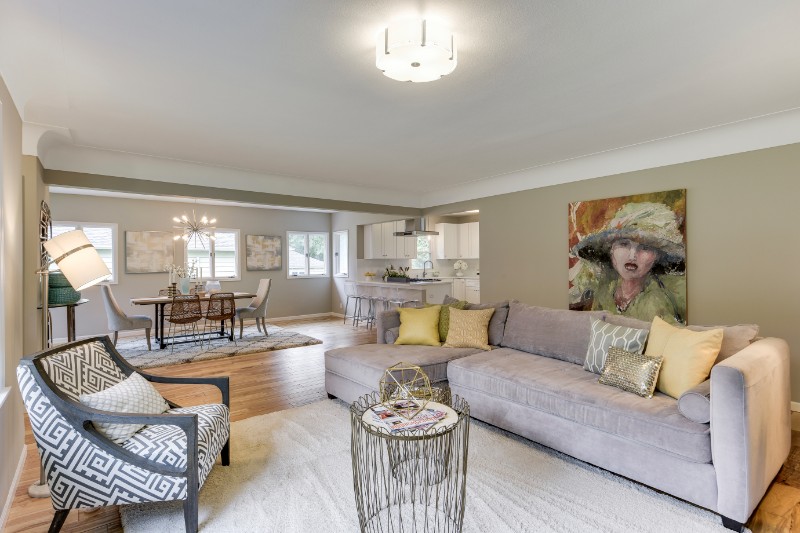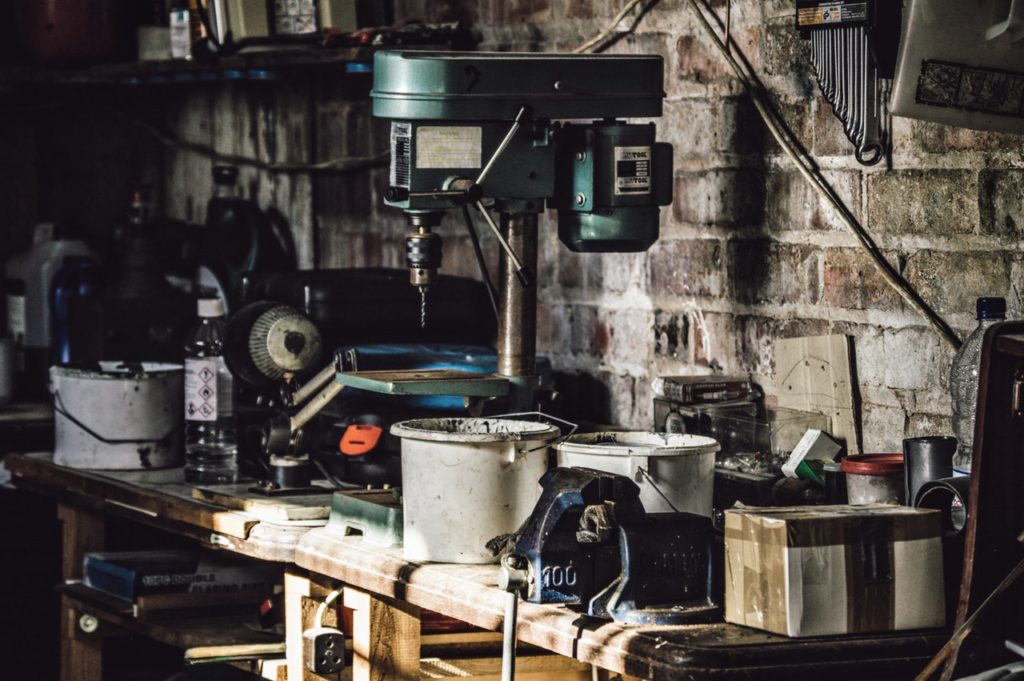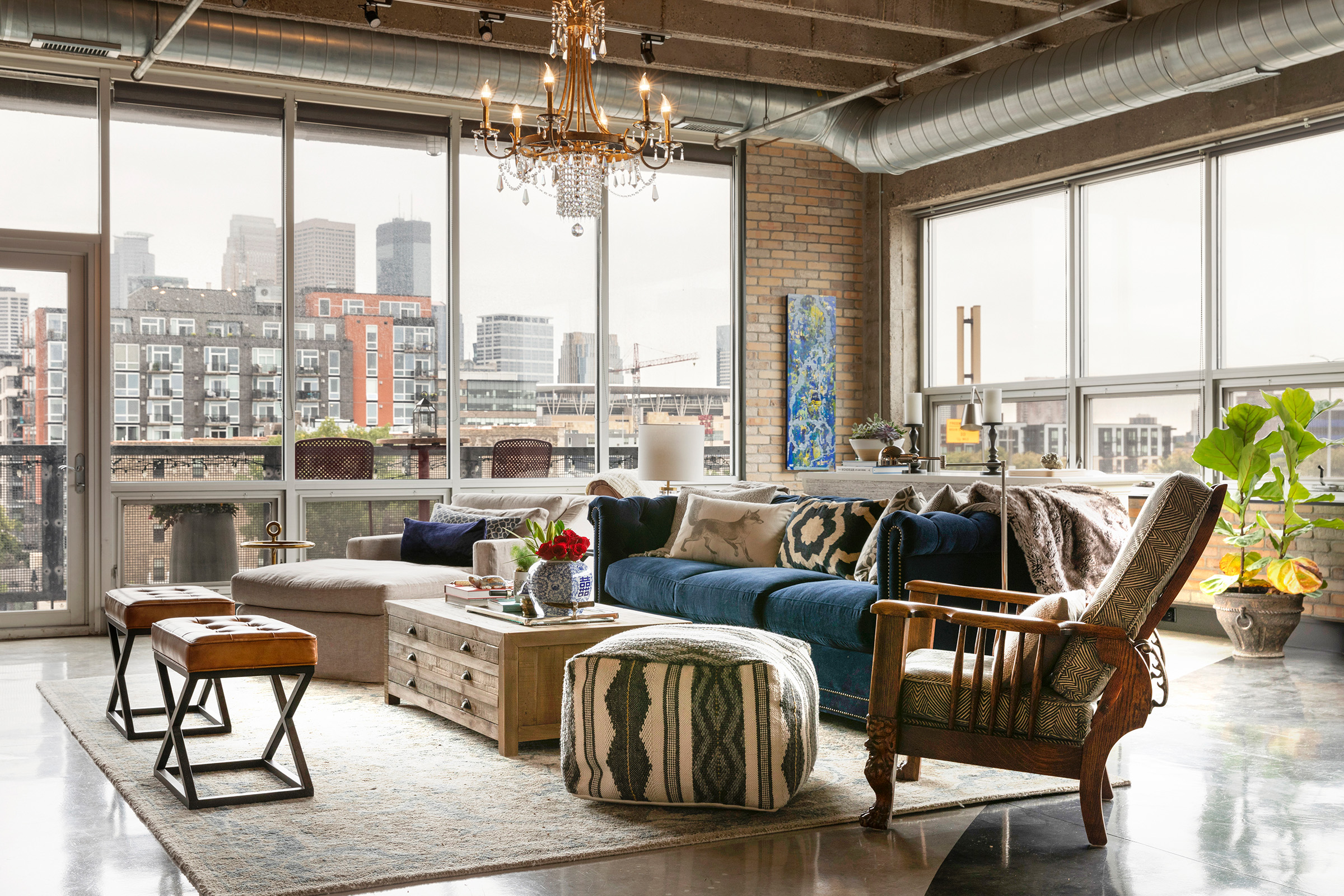Health & Interior Design
Is there a connection between your mental health and your home’s design? There sure is. No matter where you live or what you live in, careful interior design can turn your space into a sanctuary.
Important elements like your room layout, the sounds from outside, and even the color schemes you put together will define the character of your home. These design elements can affect your physical and mental health in ways you may have never imagined.
Home Care. Self Care.
In many ways, caring for our spaces is caring for ourselves. Our personal spaces are the ones that set the stage for everything else we do outside of that space. If your home is a cluttered mess, your office tends to be as well and maybe even your routine.
If you are feeling triggered by what you don’t have as it relates to material things, it probably means it is time to explore what you may need emotionally or physically at home to feel more at peace.
witanddelight.com
Removing clutter is a huge part of caring for your space. This likely won’t reveal the home you NEED though, just the one you might think that you want. Since, as humans, we can’t control much of what is happening around us, we should strive to control what we can and it starts with your living space. Really well-designed spaces can heal your psyche and elevate the enjoyment of your company and family. You may find yourself staying home more and going out less if your space is satisfying your need for balance and function. You may notice that you find yourself getting more beauty rest if your bedroom is a sanctuary.
One mistake many people make is coveting the material items in our lives. Things for our home, things for our office, things for our feet and bodies. If you are feeling triggered by what you don’t have as it relates to material things, it probably means it is time to explore what you may need emotionally or physically at home to feel more at peace.
What does it look like?
We think of our personal havens as the place where it’s ok to do what we please. It’s our home, we can be messy if we want to, leave dishes in the sink, piles on our desk and dresser. The kids can run and yell and animals can roam freely. And while all of those things make up the typical family living environment, they may not actually be lending to our happiness. Often times we retreat to our bedrooms for some peace and quiet but are our bedrooms designed to be stylish and comfortable?
Bring nature inside
We long to be in the sun, the woods, a green pasture, a city park – any place that is not cooped up indoors. Much like nature, we are our best when the natural elements give us space and fresh air around us. There are plenty of studies that show us that spending time in parks can reduce negative thought patterns and that people who live outside of cities, near or in green spaces have much lower rates of a handful of diseases. So if you must live in negative places, bring nature inside to help calm your soul’s natural desire to be in nature. Here are a few tips…
- Choose sand or sky (grey, ivory, white) colors for backdrop items like your couch or carpet.
- Include furniture or accent pieces with wood paneling.
- Decorate with items that show nature like floral pillows or high-resolution photos.
- Bring in real, but responsibly sourced items from the outdoors like finished driftwood.
- Use plants, flowers, succulents, and other greenery wherever you can.
- Grow fresh herbs in your kitchen!

Embrace natural light
If at all possible, make the sun your most prominent source of light during the day. You don’t want your furniture sitting in front of windows or light sources. You should be able to open drapery and windows to let in light and get a fresh breeze. This is directly linked to increasing your productivity, improving your sleep, easing aches and pains and also * BONUS * lowering your electric bills.
Apply a fresh coat of paint
A long history of psychology research suggests certain colors have calming effects, while others promote the flight-or-fight response. Certain colors help you relax and unwind, such as blue which may remind you of the ocean. Cream colors may remind you of sand on the beach, and pale gray is almost universally calming in every application.
Some primary colors like yellow and green may promote creativity. Red, however, is associated with stress and struggle. Though red has had its run in interior design, you won’t find many interior designers that recommend red in the overall scheme of your home.
Select comfy fabrics
Rugs, blankets, and curtains occupy large amounts of visual space in any home. You can use those blank canvases to add splashes of color, create a calming backdrop or display interesting patterns. You’ll want to consider all of your senses when decorating to truly make your home a sanctuary and comfort zone.
Consider these things when choosing fabric:
- Blankets: Cotton is ideal because it holds warmth. But its also breathable, so you won’t wake up from over-heating.
- Throw pillows: Much of the world now suffers from allergies of some kind. If you have allergies, avoid down-stuffed pillows since they can trigger symptoms. Polyesters or synthetic blends are much healthier options.
- Rugs: Nylon is a synthetic fabric that comes in many textures and colors. Depending on the style and brand, it can offer the feel of high-end fabric, without the cost. It’s also stain resistant and tends to keep its original texture.

Soothing sounds
Noise pollution is not just an irritating factor in your life. It can trigger tremendous amounts of stress, increase heart disease, mental illness, and other health-related problems. All of these things bring us much higher risk in large cities than any place else you could choose to live. Despite thinking that you potentially like the hustle and bustle of the city life, your mind is unable to remain healthy and your body will follow. Read more about this on Top Tips To Help You Get Your Beauty Sleep.
If you must live in a city, invest in a noise-eliminating device or sound canceler. Place it by your door to block out street sounds. Then, fill your home with better acoustics. You could enlist a home sound system, like Amazon Alexa to deliver wave or rain sounds all day. You can utilize the Netflix fireplace during colder months, keep a decorative fountain in your bedroom for the sound of flowing water or place fans in rooms to help even out your home’s airflow and natural sound path.
Essential oils
This one is really helpful for restful sleep, reading a book or even just relaxing on the couch. Plainly, inhale lavender. Its healing powers are supernatural. More research is needed, but some studies suggest specific scents—like the following—might help ease anxiety and depression symptoms.
- Orange
- Sandalwood
- Bergamot
- Lavender
- Rose
- Lemon

Clutter be gone
Most importantly and always top of the list is to banish clutter. Some people collect things and fill every space but you’ll find your family (and your self) much happier living like minimalists. If you haven’t used it in over a year, consider donating it to your favorite local chapter that needs your help.
The fewer unnecessary items you have in your living space, the better. De-cluttering cuts down on dust, trip hazards and the time you need to spend cleaning. Being in a de-cluttered atmosphere will help you focus and prepare for your day and be in a better place mentally. When you start your day with low stress and happiness in your space, your ability to function, work and make decisions (and feel good about them) is much higher.

Design the life you love
The care you put into your space is almost always a reflection of the care you need yourself. It will transcend all material needs. It will care for your family, your pets and even your guests. Make your home as open, expansive and well-designed as you possibly can.
You’ll spend more time with family, you’ll save money going out and you’ll decrease your risk for stress-related disease. Your interior designer will also love you.

